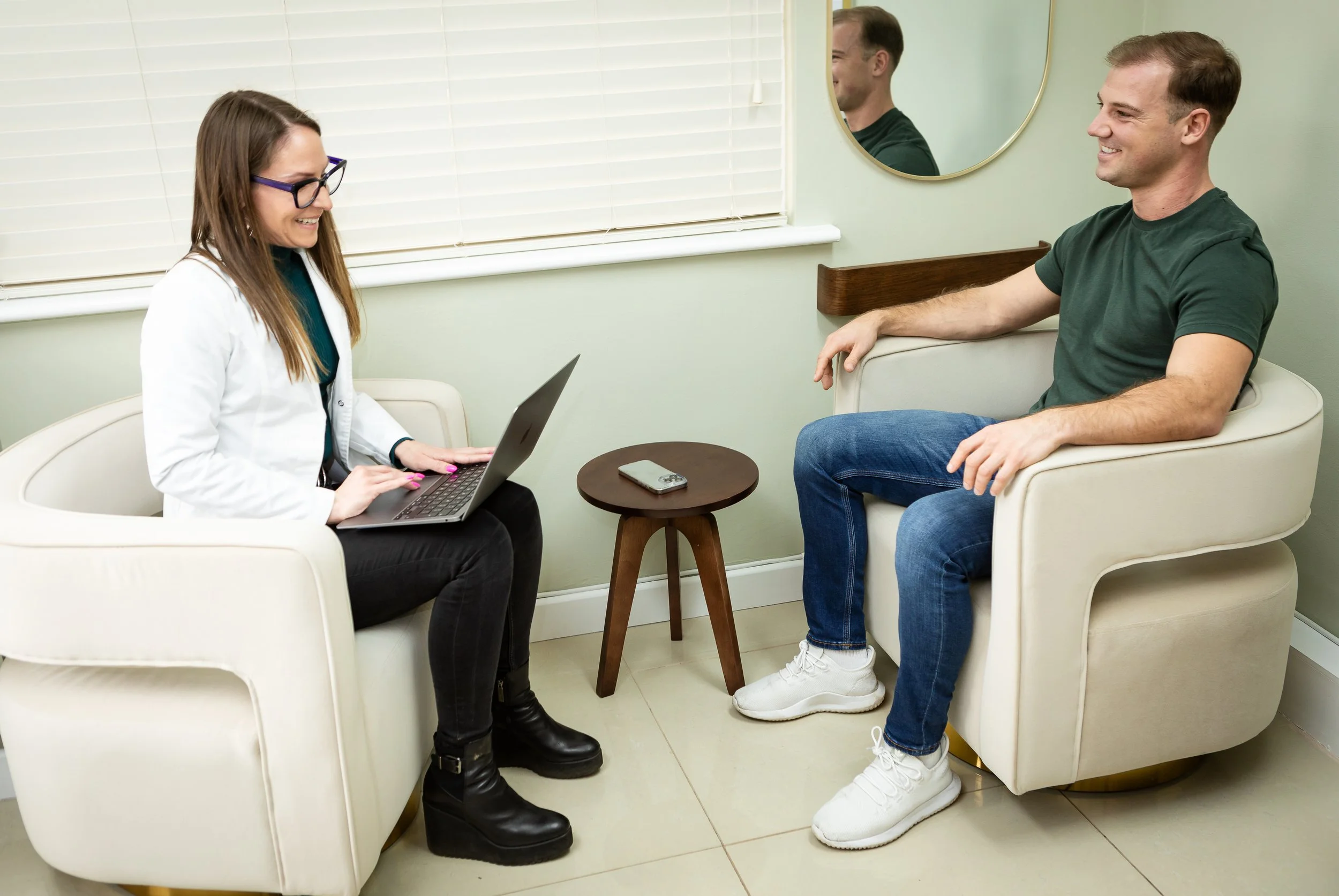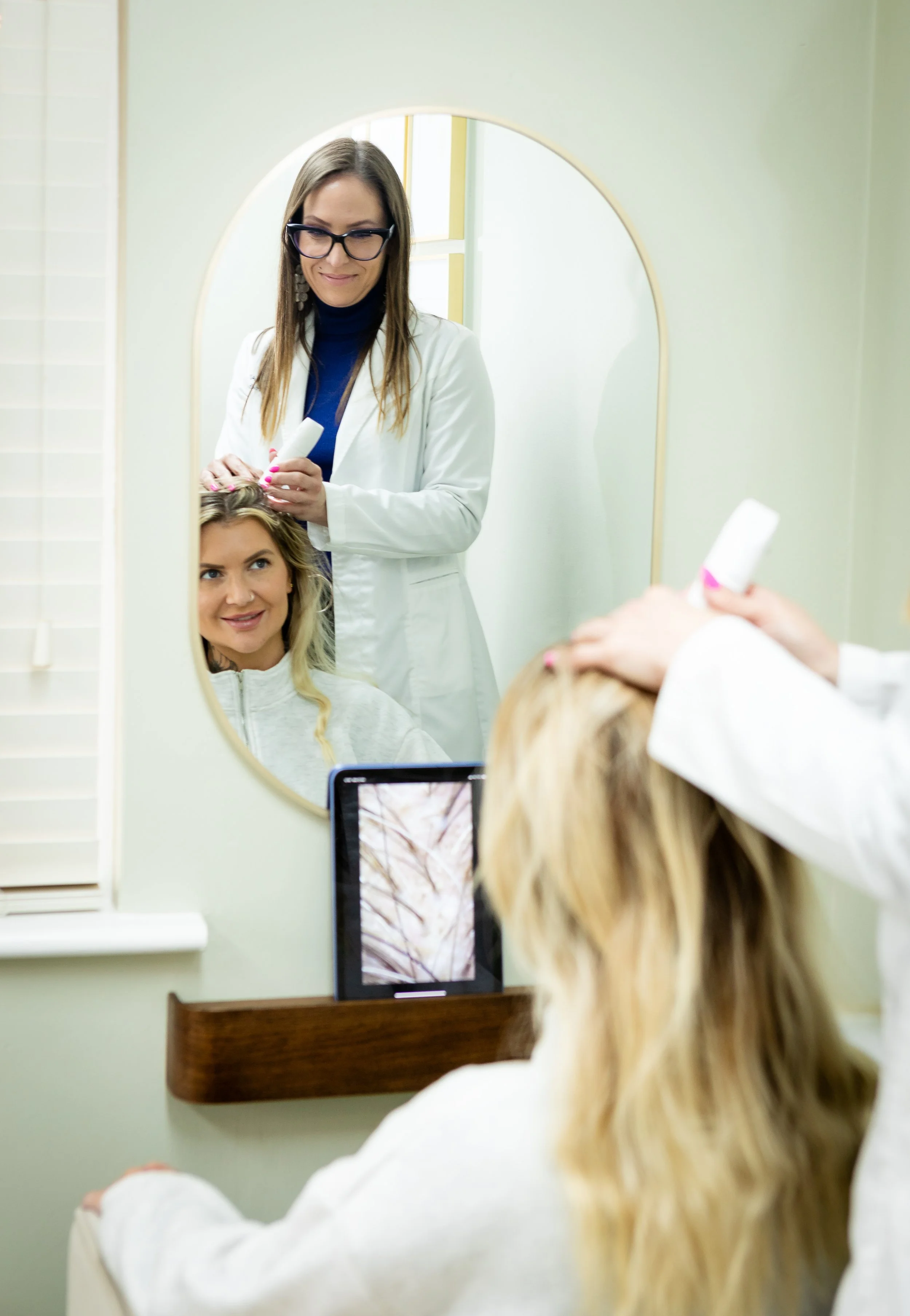PRP vs Hair Transplants: Which Is Right for You?
Contents
Hair loss can feel devastating. One minute you’re brushing your hair without a care in the world, the next you’re Googling “best hair loss treatments” at 2am, wondering where it all went wrong. Chances are, you've already stumbled across two big players in the hair restoration world: PRP therapy and hair transplants. But how exactly do they work—and more importantly, how do you know which one’s right for you?
Today, I am going to break it down without all the jargon for you. Here’s what you need to know before you dive into anything.
What’s the Difference Between PRP and Hair Transplants?
First things first—both PRP and hair transplants are designed to help restore hair, but they go about it in completely different ways.
PRP therapy (short for Platelet-Rich Plasma) taps into your body’s natural healing powers. We take a small amount of your own blood, spin it to separate out the platelets, and inject that golden goodness back into your scalp. These platelets are packed with growth factors that basically tell your hair follicles, "Oi, wake up!" It’s about stimulating and reviving what you already have—not adding anything new.
Hair transplants, on the other hand, are a bit more heavy-duty. It’s a surgical procedure where hair follicles are physically removed from a thicker area (usually the back of your scalp) and re-planted into areas where hair’s thinned out or disappeared. Think of it like gardening... but with your head.
One treatment encourages your existing hair to grow thicker and stronger. The other one moves hair around to fill in the gaps. Simple as that.
How Do PRP and Hair Transplants Work?
If you're wondering what each treatment actually feels like (and not just the marketing pitch), here’s the honest rundown:
With PRP therapy, it’s all pretty straightforward. There's no surgery involved. No stitches, no big scary wounds. You pop in, get a few tiny injections into your scalp, and you’re done. Most people head back to work or carry on with their day immediately after. It’s ideal if you’re in the early stages of thinning and want to slow things down before it gets serious. Plus, because it’s your own blood, there’s basically zero risk of any dodgy reactions.
Hair transplants, though? That’s a different beast. It's proper surgery. You’ll need to take it easy afterwards while your scalp heals—there might be a bit of swelling, some scabbing, a few awkward days where you’re very aware of your head. But once you’re through it, the results can be life-changing. It's a bigger upfront investment too; we’re talking thousands, not hundreds. But it’s generally a more permanent fix, especially for areas that have already gone fully bald.
Who is PRP For?
If you’re just starting to notice your hair thinning, maybe seeing a bit more scalp than you used to, PRP therapy is probably your best bet. It’s non-invasive, there’s no real downtime, and it’s brilliant for people dealing with stress, hormonal changes, or just that lovely gift of genetics. It can even be used to keep your hair strong after a transplant, or if you’re trying to hold off needing one for a few more years.
Who is a Hair Transplant For?
If your hair loss is more advanced with large bald patches, major hairline recession, or areas where there’s just... nothing left—then a hair transplant might be the way to go. You need to have a good “donor area” (an area with thick hair that can be moved), and you’ll need to be ready for the recovery process. But the payoff? Often well worth it.
Sometimes, people do a bit of both. Boost their hair with PRP, then later down the line, go for a transplant when needed. It's not always an either-or situation.
Common Questions
Can you combine PRP with a hair transplant?
Absolutely. Loads of people do. You can have PRP sessions before a transplant to strengthen your existing hair, and afterwards to speed up healing and maximise results.
Is PRP therapy permanent?
Not exactly. Think of PRP more like a gym membership for your scalp. It needs maintenance. Ongoing sessions can keep your hair thicker and healthier for years, but it's not a one-and-done thing.
Which is better: PRP or a transplant?
Honestly? It depends on you. Your hair loss pattern, your age, your health history, your goals... all of it matters. That's why at Ruth Collis Trichology, we always start with a proper scalp and health assessment. No guessing games.
Why Choose Ruth Collis Trichology?
Here’s the thing: we’re not just here to sell you a treatment and send you on your way.
We care about your long-term hair health. Sounds a bit cheesy, but it’s true.
We take a holistic approach, digging into everything from hormones to stress to nutrition, because sometimes what’s happening inside your body matters just as much as what’s happening on your scalp. We also believe in being 100% upfront with you. If we think you’re better off having a transplant, we'll tell you—and we’ll even recommend surgeons we trust. If PRP can genuinely help you, we’ll build a plan that fits your hair (and your life).
You’re never just a number here. Your hair journey actually matters to us.
Still unsure?
Don’t worry—choosing the right hair restoration treatment isn’t easy. If you’re sitting there thinking, “Yeah, but what about my situation?”, that's totally normal.
The best next step? Book a consultation with us. We'll check your scalp, chat about your options, and help you decide what’s best based on you, not just some sales pitch.
At Ruth Collis Trichology, your hair has a future—and we’re excited to be part of it.





